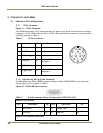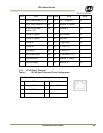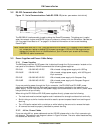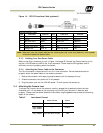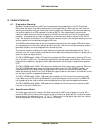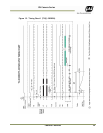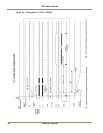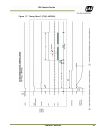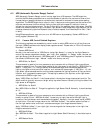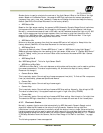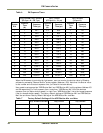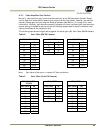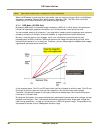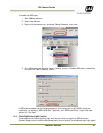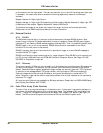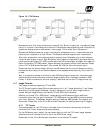
EN Camera Series
42 Camera Features
6.3 ADR (Automatic Dynamic Range) Control
ADR (Automatic Dynamic Range) control is a key algorithm of EN cameras. The ADR algorithm
controls the EN camera parameters on a continuous basis to maintain the contrast-to-noise of the
license plates on passing vehicles to a suitable level required for automatic license plate reading
algorithms. The EN ADR algorithm is unique in that it requires no moving parts and can perform this
contrast maintenance function without having to take multiple images of a vehicle in order to
achieve the required plate contrast. The key to this ability is a separate smart light sensor. Each EN
camera can communicate with up to two smart light sensors. Using these smart light sensors, the EN
cameras automatically optimize Exposure time (or shutter speed), and Video Amplifier Gain (“Gain”
in short).
Using EN setup software, user can turn on or off ADR control by accessing “Camera ADR Control”
config register (Address = 50).
6.3.1 Camera ADR Control Related Registers
The following registers are accessible by users in order to switch ADR control on/off and fine-tune
the logic. ENSetup software can display these registers as well. Please refer to “EN to LC Interface
Document” for detail.
• Camera ADR Control
Normally, the user must set to “ADR Control (using Light Sensor)” in order for the Light Sensor to
control the camera parameters (shutter, gain, vtop, vbot, pedestal). In “Debug” mode, the user can
set Light Sensor A and B values to “ADR Debug side A” and “ADR Debug side B” registers to simulate
the camera’s ADR control logic. “Manual” mode is for factory use only.
• ADR LS Gain for Side A
This parameter is used to fine-tune cameras to environments with a different lighting conditions,
lenses, or optical filters. The raw A side reading of the light sensor is multiplied by “ADR LS Gain for
Side A”. If LSA_Gain > 1.0, the light sensor value becomes larger and the camera assumes the
lighting is brighter at that particular location, so it reduces the camera gain. If LSA_Gain < 1.0, the
light sensor value becomes smaller and the camera assumes the lighting is darker at that particular
location, so it increases the camera gain. This setting is used only for daytime, as the light sensor
value must be ZERO at night time.
Apply “ADR LS Gain for Side A” if the license plate in the daytime image is saturated to white. The
worst condition typically occurs on a bright sunny day when the sun is directly hitting the side of the
light sensor at 90 degrees.
• ADR LS Gain for Side B
See “ADR LS Gain for Side A”. This gain is applied to Light Sensor Side B. Normally, it should be kept
at 1.0.
• ADR Side A Offset
This parameter is used to fine-tune cameras to environments with a different lighting conditions,
lenses, or optical filters. “ADR Side A offset” is used only at night time while the night light is
turned on (the light sensor value moves below threshold). Normally, the light sensor value is ZERO
at night time. If you add a larger value to the “ADR Side A offset”, the camera adds this offset to
the raw light sensor value, and thus it reduces camera gain (the image becomes darker.)
Apply “ADR Side A offset” if your night light is too strong and the license plate in the night time
image is saturated to white.
• ADR Side B Offset
See “ADR Side A offset”. This offset is applied to Light Sensor Side B. Normally, it should be kept at
0.
• ADR Shadow Factor



